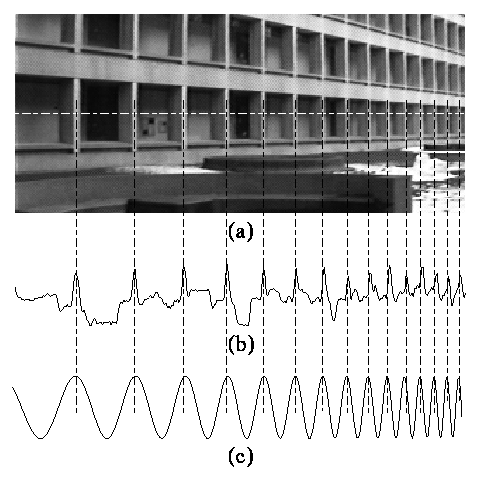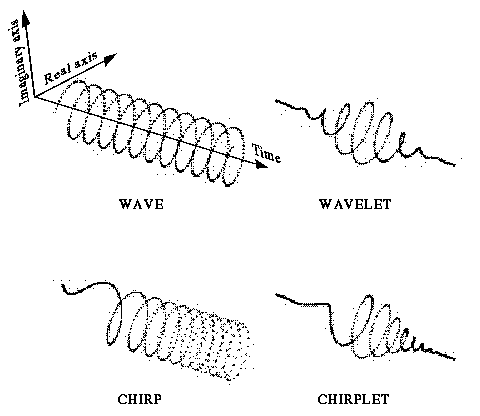

The Chirplet Transform is a new mathematical transform invented by S. Mann, and it captures the essence of things that change in frequency. For example, repeating patterns in reality are often seen at different perspectives in an image, so that they actually "chirp".
A chirp is like the sound a bird makes: it might start out at a low frequency (a low pitch or low note) and then change to a high frequency (a high pitch or a high note) while it is sounding. This glide from low note to high note is called an "up chirp". The frequency can also go down while something is occuring, and we call this a "down chirp".
The building we see in the picture above is "up chirping" since the frequency is increasing from left-to-right.
The Chirplet Transform analyzes all possible chirps, and helps computers understand repeating patterns in the world, even when those patterns don't stay constant in their frequency.
The Chirplet Transform is a new mathematical breakthrough that can help computers work better at understanding the world and at processing data more efficiently than using waves and wave analysis (sines and cosines).
The Chirplet Transform is one of many mathematical inventions of S. Mann, and this body of work can be extended and commercialized in many ways.
For example, Andromed uses the Chirplet Transform to analyze heart sounds. National Instruments offers Chirplet Transform implementation in their devices and computer chips.